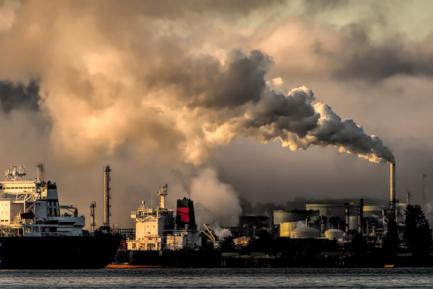Russia puts the global outlook for oil in check
The conflict between Russia and Ukraine and the sanctions imposed on Russia have highlighted the vulnerability of the global growth model to energy supply shocks.

The conflict between Russia and Ukraine and the sanctions imposed on Russia have highlighted the vulnerability of the global growth model to energy supply shocks.1 Since the beginning of the war, the Brent barrel price has increased by more than 15% and remains well above 100 dollars, reaching levels not seen in the last decade (peaks of around 130 dollars). The pressure on prices has been the result of heightened uncertainty surrounding Russia’s ability and willingness to maintain its supply and the difficulties arising from the sanctions in paying for Russian crude oil. As an example, some countries such as the US and the United Kingdom have banned imports of the country’s oil.
- 1. This is despite the fact that the relationship between energy and GDP, measured using the ratio of barrels of crude oil to units of production, has fallen worldwide since the oil crisis of the 1970s from 60% to 30% in recent years.
According to the International Energy Agency (IEA), Russia ranks as the world’s third biggest oil producer, after the US and Saudi Arabia, and the second biggest exporter, behind the latter. In 2021, Russian oil production2 averaged 10.5 million barrels a day (b/day), representing around 10% of the world’s total, while its exports amounted to 8% of the total of the sector.
The first sets of data since the beginning of the war concerning Russian oil activity appear to confirm the suspicions of the international agencies, which warned of both a possible moderation in production and a decline in flows of crude oil to other countries in the short term, in this case as a result of international refusal to trade. In particular, the IEA and the consensus of industry analysts agree that some 3 million b/day of Russian crude oil, equivalent to a fifth of the country’s production, could be withdrawn from the global market over the coming months. This would entail one of the biggest supply shocks since the oil crisis of the 1970s.
On the demand side, the combination of the slowdown in economic activity in a context of uncertainty, the efforts to reduce the consumption of Russian crude oil and to substitute it not only with oil from other parts of the world but also with other energy sources, and the impact of Omicron on China has prompted a downward revision of estimates of global oil demand for 2022 (in March, the IEA cut its forecast by 1.3 million b/day to 99.7 million b/day). This aspect certainly diminishes the imbalance between supply and demand, but it is not enough.
- 2. Includes the production of both crude oil and refined products.


In view of this potential imbalance in the energy markets, the main alternatives on the supply side are as follows. One of the options that could offset some of the deficit of Russian crude oil would be for OPEC and its partners to boost production. This approach would initially require a shift in the supply-control strategy which the organisation has maintained since the pandemic (based on a gradual increase of 400,000 b/day per month in order to sustain prices), although it would be limited by the low idle productive capacity of most countries, with the exception of Saudi Arabia, the United Arab Emirates and Kuwait. Specifically, it is estimated that these three countries could together increase their supply by 2.1 million b/day in three months. Moreover, on this occasion the two main producers in the Persian Gulf have refused to alter the basis which underlies the agreements between OPEC and its partners, one of which is Russia.
Another option would involve boosting shale production in the US. However, opening up new wells and scaling up production at existing ones would require significant public and private investment, and in the short term this approach would come up against supply chain bottlenecks and labour shortages.
In addition, the US government has begun negotiating a new nuclear deal with Iran which, if achieved, would facilitate the export of Iranian crude oil, amounting to some 1.3 million b/day. That said, its arrival on the energy markets is expected to be slow and gradual. Finally, the most viable short-term option for easing the supply-side tensions appears to be a proposal by several G7 countries to release some of their strategic oil reserves. This idea, which gathered strength in the closing days of March, culminated with the announcement by the US that it would release 1 million b/day over the next six months (a figure estimated to represent around 30% of its total strategic reserves). However, some estimates suggest that this measure would only be effective for a few months.3
If we look at the other side of the coin, that of demand, we find a trump card that had not been so relevant in other energy crises: China. It is the world’s leading importer of oil and refined products, with around a 16% share of the global market. In 2021, its daily average imports of crude oil amounted to 10 million barrels, including 1.6 million barrels originating from Russia. In the context of war, given Russia’s need to capitalise some of its production (even at discounted prices) and the West’s reluctance to buy its crude oil, it is estimated that China could increase the volume of its purchases of Russian oil by around 2 million b/day, thereby releasing some of the supply of other producing countries. This option appears to be the most feasible in the short term, as it is mutually beneficial to both Russia and China,4 although there would be geographical obstacles for its transportation and storage which would slow the process down and make it more expensive.
- 3. See Federal Reserve Bank of Dallas (March 2022). «The Russian Oil Supply Shock of 2022».
- 4. China could purchase Russian Urals crude, which is of a higher quality than others, at below-market prices. Russia would receive payment in yuan, complementing its foreign-exchange reserves and improving its current-account position.

In short, the future of the oil market for the coming months is uncertain and littered with obstacles, mainly on the supply side, and this could continue to apply upward pressure on oil prices. The imbalance in crude oil stocks that the war could generate and the sanctions imposed on Russia, as well as the very idiosyncrasy of the post-pandemic oil sector (limited free production capacity and lack of investment), have led us to raise our forecasts for the average price of a barrel of Brent in 2022 to 105 dollars, up from the previous 89.





